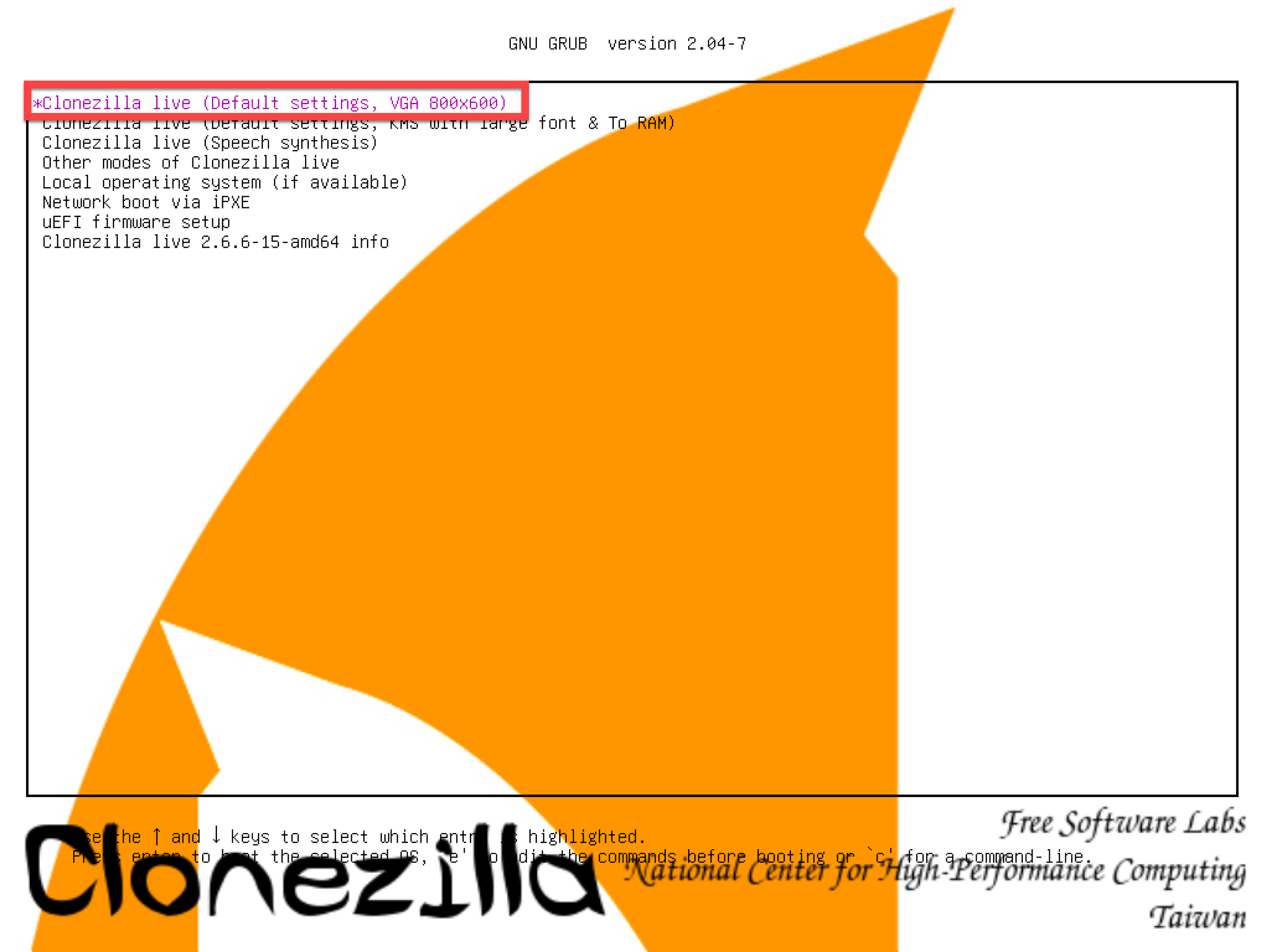

- #Clonezilla image restore from network mac os
- #Clonezilla image restore from network install
- #Clonezilla image restore from network archive
- #Clonezilla image restore from network portable
- #Clonezilla image restore from network software
After accepting the default or entering your own name, go to the next screen. The next screen asks for a name for your new image. In the next screen you can choose savedisk, which creates an image of an entire hard disk, or save_parts, which allows you to select individual partitions. Press Enter, and the next screen gives you the option of Beginner or Expert mode. Select your desired directory, and the next screen shows all of your mounts and used/available space.

Select the one you want to store your new image in, and then it asks which directory to use and shows you a list. When you select local_dev Clonezilla scans all of your locally-attached storage, including hard disks and USB storage devices, and makes a list of your partitions. I’ll use a local partition, which means selecting local_dev. If you choose any of the server options you’ll need a wired Ethernet connection, the IP address of your server, and your login. An attached USB hard drive is a nice fast and easy option. If you choose local_dev, then you’ll need a local partition with enough room to store your image. The size of your destination partition or drive must be the same size or larger than the volume you’re copying. This is where you select the location for your backup image to be copied to. This screen is a little confusing, with options for local_dev, ssh_server, samba_server, and nfs_server. In the next menu select device_image, then go to the next screen. You’ll be asked language and keyboard questions, and when you arrive at the Start Clonezilla menu select Start Clonezilla.
#Clonezilla image restore from network portable
Now you have a nice portable Clonezilla USB stick you can use almost anywhere.īoot up your Clonezilla USB stick on the computer that you want to backup, and the first thing you’ll see is a normal-looking boot menu. It asks you if you want to reboot now, but don’t worry because it won’t. Click OK, and when it’s finished click Exit. It should find your USB stick automatically, and you should check the partition number to make sure it found the right one. Check “Pre-downloaded” and click the button with the ellipsis to select your Clonezilla file. This example shows a 2GB stick formatted as a single partition. I like to use labels, like “clonezilla”, so I know what it is. First create a FAT32 partition of at least 200 megabytes figure 1 (above) shows how it’s done in GParted. Once you get Tuxboot installed, use it to create your nice live bootable Clonezilla USB stick.
#Clonezilla image restore from network install
If you’re not running Ubuntu and your Linux distribution doesn’t include a packaged version of Tuxboot, download the source tarball and follow the instructions in the README.txt file to compile and install it.
#Clonezilla image restore from network archive
Installing Tuxboot is a bit of pain, though Ubuntu users can install Tuxboot the easy way from a personal packages archive (PPA): $ sudo apt-add-repository ppa:thomas.tsai/ubuntu-tuxboot Tuxboot is a modification of Unetbootin that supports Clonezilla you can’t use Unetbootin because it won’t work. Alternative Stable is based on Ubuntu, includes some non-Free firmwares, and it supports UEFI Secure Boot.Īfter you download Clonezilla, install Tuxboot to copy Clonezilla to a USB stick. Stable is based on Debian and includes no non-Free software. There are also Testing releases, which I recommend if you’re interested in helping to improve Clonezilla. When you visit the download page you’ll see Stable and Alternative Stable releases. Today we shall create a Clonezilla Live USB stick, clone something, and restore it.
#Clonezilla image restore from network software
Clonezilla SE is a wonderful bit of software that we shall cover in the future. Clonezilla SE is for larger deployments, and fast multicast cloning an entire network of PCs at once. Clonezilla live is ace for cloning single computers to a local storage device or network share. (A quick note on blocks: disk sectors are the smallest addressable storage units on hard disks, and blocks are logical data structures made up of single or multiple sectors.)Ĭlonezilla comes in two versions: Clonezilla Live and Clonezilla Server Edition (SE). So, the short story is Clonezilla can copy anything. It’s a good tool for backing up a complete Windows system with all of your installed applications, and I like it for making copies of Linux test systems so that I can trash them with mad experiments and then quickly restore them.Ĭlonezilla can also copy unsupported filesystems with the dd command, which copies blocks rather than files, so it doesn’t need to understand filesystems. Clonezilla supports 32- and 64-bit systems, both legacy and UEFI BIOS, and both MBR and GPT partition tables. It supports all the major filesystems including EXT, NTFS, FAT, XFS, JFS, and Btrfs, LVM2, and VMWare’s enterprise clustering filesystems VMFS3 and VMFS5.
#Clonezilla image restore from network mac os
Clonezilla is a partition and disk cloning application for Linux, Free-, Net-, and OpenBSD, Mac OS X, Windows, and Minix.


 0 kommentar(er)
0 kommentar(er)
